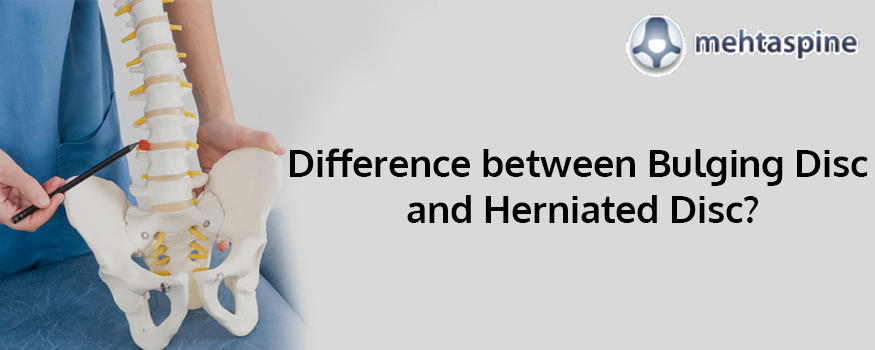Difference between Bulging Disc and Herniated Disc?
Back pain is the second most common reason for people taking off from the work (the common cold is the first). While the common cold is a simple and harmless infection that can be easily treated, the same cannot be said about the debilitating back pain which makes it difficult for you to perform any type of function.
Back strain is the most common reason for back pain in adults and fortunately also the simplest one at that, given it can treat very easily by an orthopaedist or even a primary care physician. But few times the cause of back pain can be something serious to the tune of spinal disc problems, most commonly herniated or bulging discs in the spine and both these disc problems are most often confused by the general population.
So in this blog here we discuss both these problems, differentiate between them and make an effort to raise awareness about these common spinal disc problems. Read on:
A brief about Spine – Spine is made up of 33 vertebrae and these between these bones rest round and small cushions called discs that are made up of collagen and fibrocartilage. Surrounded by the tough fibrous wall on the outside and gel-like substance in the inside, these discs act as shock absorbers, allows the spine to bend and twist.
So, what is the bulging disc?
Given the spinal disc is a round cushion with fibrous outer layer on the outside and gel-like nucleus pulpous on the inside, over time, the outer wall weakens and the gel-like substance starts to push out causing the disc to bulge. This bulging disc can protrude into the spinal canal and sometimes can compress a nerve root causing pain or dysfunction.
Symptoms of the bulging disc can include numbness or tingling sensation in the limbs, intense radiating pain in the arm or leg, bladder or bowel weakness and few cases pain during coughing, bending or sneezing.
Causes of bulging discs:
Degeneration of the disc with ageing is the most common cause of bulging discs. Awe age the spinal discs can become dehydrated, flattened and protrude into spinal canal increasing the risk of pain and dysfunction. In few cases bulging disc problems is also caused by strain during intensive repetitive motions or heavy lifting, obesity, poor posture or spinal injuries. Without the right treatment for bulging discs, this condition can progress into more serious herniated disc problem.
Herniated disc:
While the gel-like nucleus pulpous puts a rapid pressure in case of bulging discs, in few cases the outer wall ruptures in the process where the gel gets out into the spinal canal compressing the nerve root or spinal cord. This can result in inflammation, intense pain or difficulty in movements far worse than the bulging discs. This disc herniation can happen in any part of the spine, cervical (neck), thoracic or even lumbar (lower back) and the symptoms can depend on the area of the spine affected.
Symptoms can range from the pain shooting down the arms, legs, fingers, weakened leg muscles, difficulty in walking, balance problems, bladder or bowel movements, coordination problems and more. The herniated disc condition is the progressive version of the bulging disc problem and the causes remain the same in both cases – degeneration, repetitive motions, spinal trauma or injury.
In few cases, mild cases of the bulging disc or herniated may resolve over time, but in severe cases where the complications can range from urinary and bowel incontinence, saddle anaesthesia to paralysis. Depending on the severity herniated discs can be treated with pain management, physical therapy and surgery (in severe cases) by spine surgeon in UK.
So it is always advised to consult a spine specialist in case of any debilitating back pain to stop it in the tracks before any serious complication. If you are looking for treatment for herniated disc condition or any other spinal health problems, you can contact Children and Adult Spinal Surgeon Mr Jwalant S Mehta here: https://www.mehtaspine.co.uk


